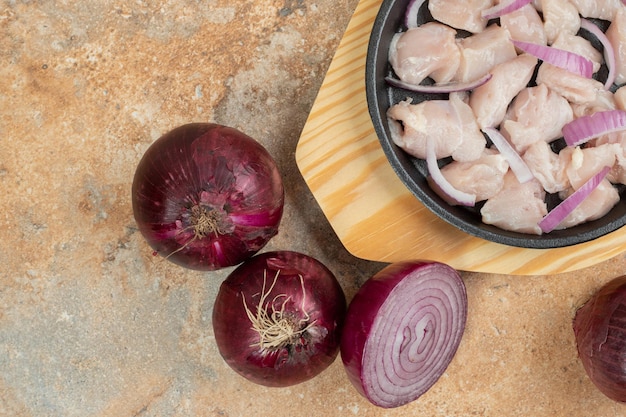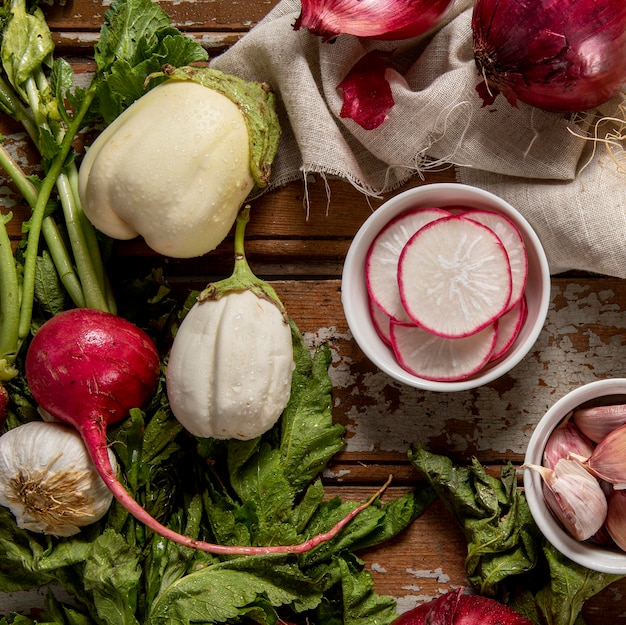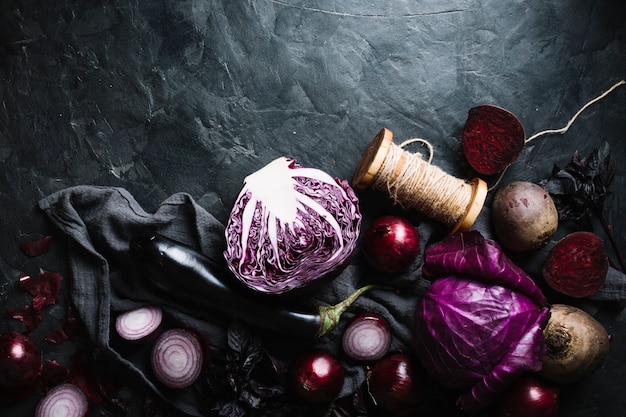Ah, beets. Those deep red, earthy roots that stain your hands and leave a lingering sweetness on your tongue. You either love them or you're on the fence. But trust me, once you master the art of cooking beets, you'll be adding them to everything! I'm a bit obsessed, I confess, and I'm here to share my secrets to getting the most delicious, tender, and flavorful beets.
This guide is your one-stop shop for all things beet. We'll cover everything from picking the perfect beets to cooking them in various ways, and even delve into some of my favourite beet-tastic recipes. So, grab a cuppa, settle in, and let's get this beet party started!
Part 1: The Beets Themselves

Choosing the Right Beets
Picking the perfect beet can feel like a bit of a gamble, but fear not! You want them firm, smooth, and free of blemishes. Here's what I look for:
- Size Matters: For most recipes, medium-sized beets are ideal. They're usually the sweetest and cook evenly. Think of a tennis ball – that's a good size. Avoid those tiny little beets or the ones that are absolutely enormous. They might take longer to cook or might be a bit more on the woody side.
- A Firm Touch: A good beet should feel firm to the touch, not squishy or soft. If you press on it and it feels a bit spongy, it might be past its prime.
- No Cracks or Bruises: Look for beets with smooth skin, free of cracks or any signs of damage. A few tiny scratches are fine, but avoid anything that looks like a deep cut or bruise.
- Fresh Tops: Fresh, vibrant green tops are a good indicator of a fresh beet. You can even use the greens in salads or stir-fries, but make sure they're not wilted or damaged. Those vibrant green leaves are a sign that the beet is still full of life and flavor.
Remember, you can always ask your greengrocer for advice. They're usually happy to help you pick the best ones. They're the experts, after all!
Storing Your Beets
Once you've got your perfect beets, you need to store them properly to keep them fresh. Here's the deal:
- Keep Them Cool: Store beets in a cool, dark place, like your fridge's vegetable drawer. Don't let them get too warm or they'll start to deteriorate.
- Unwashed is Best: Wash your beets right before using them. Keeping them unwashed helps them stay fresh for longer. It's like keeping a little bit of the earth's moisture in.
- Trim the Tops: Trim the leafy greens just below the bulb. The tops can be stored separately in a bag in the fridge for a few days. Don't worry, you can use them in salads or soups!
Part 2: The Art of Prepping Beets

Cleaning Up Your Beets
Now, let's get those beets prepped! Before you get started, don't forget your trusty rubber gloves. Those beet stains can be a nightmare, trust me. I've learned this the hard way!
- Scrub, Scrub, Scrub: Give your beets a good scrub with a vegetable brush under cool running water. You want to remove any dirt or debris but avoid damaging the skin. Just like you'd scrub a potato, be gentle but thorough.
- Optional: Peel or Not? Whether to peel or not depends on your recipe and preference. I usually leave the skin on for roasting and boiling as it adds a bit of earthy flavor. It's like a little bit of extra earthy goodness. But if you're making a salad or a dish with a delicate presentation, peeling is a good option.
Trimming Your Beets
Trimming beets is pretty straightforward. Here's how:
- Trim the Root End: Cut off the root end of the beet, where it was connected to the soil. This part is usually a bit tougher and doesn't taste great.
- Trim the Top: Cut off the leafy greens just below the bulb, leaving about half an inch of stem. This keeps the beet from drying out.
- Save the Greens: Don't throw away those tops! They're packed with nutrients and can be used in salads, soups, or even cooked like spinach. They have a slightly more peppery flavour than the beet itself.
Part 3: Cooking Methods for Beets

There are several ways to cook beets, each giving you a slightly different texture and flavor. Let's dive in!
Roasting Beets
Roasting beets is my favourite way to cook them. It brings out their natural sweetness and gives them a tender, caramelized texture. They're like little sweet, earthy caramels! Here's how I do it:
- Preheat the Oven: Heat your oven to 400°F (200°C).
- Wrap Them Up: Wrap each beet individually in foil, or place them in a baking dish and cover with foil. This helps them cook evenly and keeps the moisture in.
- Roast to Perfection: Roast for 45-60 minutes, or until tender when pierced with a fork. roasting time can vary depending on the size of the beets. Don't be afraid to check them early!
- Cool and Peel: Once roasted, let the beets cool slightly before peeling the skin. This makes peeling much easier. The skin should practically slide off!
Tip: Add a drizzle of olive oil, a sprinkle of salt and pepper, and your favourite herbs to the foil packets for extra flavor. This is where you can get creative! Try some rosemary, thyme, or even a bit of chili powder for a kick.
Boiling Beets
Boiling beets is a classic method and it's perfect for dishes like salads and dips. It's simple and doesn't require much fuss.
- Boil, Boil, Boil: Fill a large pot with water and bring to a boil.
- Add the Beets: Gently add the beets to the boiling water.
- Cook Until Tender: Cook for 30-45 minutes, or until tender when pierced with a fork. You want them to be soft enough to easily cut with a knife.
- Cool and Peel: Drain the beets and let them cool slightly before peeling.
Tip: Add a splash of vinegar to the boiling water to help preserve the colour of the beets. It keeps them from turning a dull grey, which is a little bit unappetizing, don't you think?
Microwaving Beets
Microwaving is a quick and easy option, especially if you're short on time. It's a bit of a shortcut, but it works! Here's what you do:
- Wrap and Microwave: Wrap each beet individually in a damp paper towel and place in a microwave-safe bowl. The moisture from the paper towel will help the beets cook evenly.
- Microwave Until Tender: Microwave on high for 5-7 minutes, or until tender when pierced with a fork. cooking time will vary depending on the size of the beets and your microwave's power. It's always best to check them early!
- Cool and Peel: Let the beets cool slightly before peeling. They'll be much easier to handle once they've had a chance to cool down.
Tip: If your beets are larger, you might need to microwave them in two batches to ensure even cooking. Don't try to cram too many in the microwave at once. You'll end up with unevenly cooked beets.
Part 4: Beet Transformation: How to Use Cooked Beets
You've cooked those beets, now what? Let's explore some ways to turn those earthy beauties into delicious dishes.
Slicing and Dicing
Once your beets are cooked, you can slice or dice them according to your recipe. Here's a quick guide:
- Slicing: Use a sharp knife to slice the beets into thin rounds or thicker slices, depending on the dish. Thin slices are perfect for salads or as a topping for burgers. Thicker slices work well for roasting with other vegetables.
- Dicing: Chop the beets into small cubes, perfect for salads, dips, or sauces. Dicing them makes them easier to incorporate into dishes where you don't want large chunks of beet.
Tip: A mandoline is great for getting perfectly even slices. It's a bit of a kitchen gadget, but it's worth it if you're a fan of beautifully presented dishes.
Shredding and Grating
If you're looking for a more delicate texture, shredding or grating is the way to go. It's especially good for salads or adding a bit of color to dishes like pasta or soups.
- Shredding: Use a box grater or a food processor to shred the beets into long, thin strips.
- Grating: For a finer texture, grate the beets using a cheese grater. This is a good option if you're making something like a beet dip or beet hummus.
Tip: Use shredded beets in salads, as a topping for soups, or as a base for burgers.
Pureeing into Smoothness
For dips, sauces, and even veggie burgers, pureeing cooked beets is a game-changer. It creates a smooth, creamy base that's full of flavor.
- Food Processor: The easiest way to puree beets is using a food processor. Simply add the cooked beets and pulse until smooth.
- Blender: You can also use a blender, but be careful as it might splash, especially if you add any liquids. Make sure to keep the lid on tightly and start on a low speed.
Tip: Add a bit of olive oil or lemon juice to the puree for extra flavour and creaminess. A little bit of acidity balances out the sweetness of the beets.
Part 5: A World of beet recipes
Alright, you're ready to experiment with those beets! Here's a glimpse of the wonderful world of beet recipes.
Salads that Sing
Beets add a vibrant color and sweetness to any salad. Here are some ideas:
- Beet and Goat Cheese Salad: Mix roasted beets with crumbled goat cheese, toasted walnuts, and a honey-balsamic vinaigrette. The creamy goat cheese and tangy vinaigrette complement the sweet beets perfectly.
- Beet and Arugula Salad: Combine roasted or boiled beets with arugula, red onion, and a lemon-mustard dressing. The peppery arugula and tangy dressing create a nice contrast with the sweetness of the beets.
- Beet and Citrus Salad: Toss sliced beets with oranges, grapefruit, and a tangy dressing. The citrus fruits add a burst of freshness and acidity to balance the sweetness of the beets.
Savoury Delights
Beets aren't just for salads! They add a delicious earthy flavour to savoury dishes.
- beet burgers: Combine pureed beets with black beans, oats, and spices to create juicy veggie burgers. They're a great alternative to beef burgers and packed with nutrients.
- Beet Soup: A hearty and healthy soup made with beets, carrots, onions, and vegetable broth. It's warm, comforting, and perfect for a chilly day.
- Beet and lentil curry: A vibrant and flavorful curry featuring beets, lentils, coconut milk, and spices. It's a delicious and satisfying vegetarian meal.
Sweet Treats
Beets are surprisingly versatile and can even be used in sweet dishes! Who would have thought?
- Beetroot Brownies: A healthier twist on classic brownies with a hint of beetroot sweetness. They're moist, fudgy, and surprisingly delicious!
- beetroot cake: A moist and delicious cake made with beetroot and topped with a creamy frosting. The beetroot adds a subtle sweetness and a beautiful red hue to the cake.
- Beetroot Ice Cream: A unique and refreshing ice cream with a subtle beetroot flavour. It's a surprisingly delicious and refreshing treat.
Part 6: beet benefits: More Than Just Flavor
Beyond their deliciousness, beets are packed with nutrients. They're a good source of:
- Vitamin C: Helps support the immune system and collagen production. It's important for healthy skin and bones.
- Folate: Essential for cell growth and development. It's especially important during pregnancy.
- Potassium: Helps regulate blood pressure and muscle function. It's vital for healthy heart function.
- Nitrates: May improve blood flow and exercise performance. They've been shown to help with endurance and recovery after exercise.
- Antioxidants: Help protect against cell damage. They help fight free radicals and protect your cells from damage.
Part 7: Storing Cooked Beets
Want to save those delicious beets for later? Here's how to store them properly:
- Refrigerator: Store cooked beets in an airtight container in the refrigerator for up to 4 days. They'll stay fresh and tasty.
- Freezing: You can also freeze cooked beets for up to 3 months. Freeze them whole, sliced, or diced in an airtight container or freezer bag. They're great to have on hand for quick meals or snacks.
Part 8: The Great Beet Debate: Raw vs. Cooked
Now, some people swear by raw beets, while others prefer them cooked. It comes down to personal preference. Here's a quick breakdown:
Raw Beets
- Taste: Raw beets have a more earthy and peppery flavour. They're a bit more intense and less sweet.
- Texture: They have a firm, crunchy texture. It's a satisfyingly crisp bite.
- Nutrient Content: Some argue that raw beets retain more nutrients. However, cooked beets are still very nutritious.
Cooked Beets
- Taste: Cooking brings out the natural sweetness of the beet and mellows out the earthy flavour. They become sweeter and more approachable.
- Texture: Cooked beets are tender and easier to digest. They're a bit softer and easier on the stomach.
- Versatility: Cooked beets are more versatile for use in various dishes. They can be added to salads, soups, stews, or even desserts.
Part 9: FAQs: Your Beet-Related Questions Answered
Q1: Can you eat beet greens?
Absolutely! Beet greens are packed with nutrients and have a slightly earthy, spinach-like flavour. You can cook them like spinach or use them in salads. They're a great way to use the whole beet.
Q2: What does beetroot taste like?
Beetroot has a distinctive, earthy, and slightly sweet flavour. It's often described as being similar to the earthiness of red wine or even a hint of chocolate. It's a unique flavor that you either love or hate.
Q3: Why are my beets bleeding?
The red juice from beets is called betalain, and it's a natural pigment. It's completely normal for beets to "bleed" when cooked, especially if you've cut them before cooking. It doesn't affect the flavour or safety. It's a natural part of the beet.
Q4: Why are my beets tough?
Tough beets often indicate under-cooking. You might need to roast or boil them for a little longer to achieve a tender texture. Check them early and don't be afraid to cook them a bit longer if needed.
Q5: How long do beets last in the fridge?
Unwashed beets can last in the fridge for about a week, while washed beets are best used within 3-4 days. Cooked beets can be stored in an airtight container in the fridge for up to 4 days. Keep them well-wrapped to prevent them from drying out.
Final Thoughts: The Beet Goes On
There you have it, folks! The ultimate guide to cooking beets, from choosing the perfect ones to whipping up delicious recipes. Remember, beets are incredibly versatile and can be enjoyed in countless ways. So, get creative, experiment, and most importantly, have fun with those earthy beauties. The beet goes on, my friends!
Now, I'm off to make myself a beet and goat cheese salad. Who's with me?
Everyone is watching

How to Cook Frozen Lobster Tails Perfectly: A Step-by-Step Guide
RecipesLobster. Just the word conjures up images of lavish meals, special occasions, and a taste of luxury. But let's...

Pigs in a Blanket Cooking Time: How Long to Bake for Perfect Results
RecipesAh, pigs in a blanket. Just the name conjures up images of those delightful little parcels of crispy pastry en...

Pork Fillet Cooking Time: How Long to Cook It Perfectly
RecipesPork fillet, or tenderloin as it's sometimes called, is a real favourite in our house. It's so versatile, and...

The Ultimate Guide to Cooking Delicious Frankfurters
RecipesLet's face it, we all love a good frankfurter. It's a classic, simple, and always satisfying. But let's be rea...

Wolf Meat Recipes: A Guide to Cooking Wild Game
RecipesLet's be honest, you don't see wolf meat at your local butcher shop every day. It's a bit of a wild card, but ...
